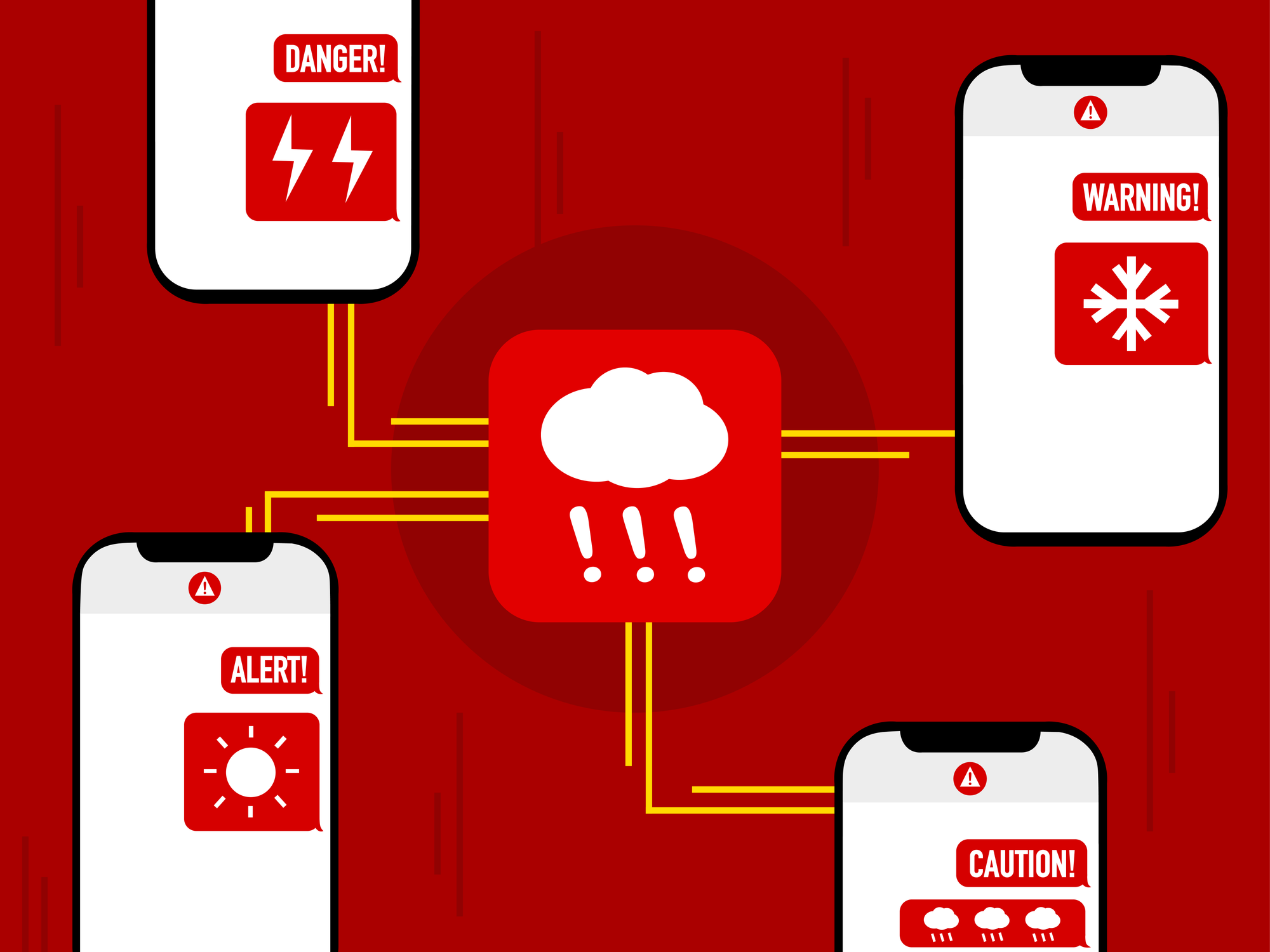This Emergency Alert Nonprofit Saw Over 75,000 Incident Reports During the SoCal Storm
Samson Amore is a reporter for dot.LA. He holds a degree in journalism from Emerson College. Send tips or pitches to samsonamore@dot.la and find him on Twitter @Samsonamore.

The ruthless storm that’s pitched Southern California into a torrential downpour this week is also putting Los Angeles’ emergency alert systems to the test.
While the National Weather Service for Los Angeles’ flash flood warning isn’t currently in effect, at least two more storm systems are expected to touch down later this week.
And the more it rains, the more evident it becomes that Los Angeles lacks a cohesive central alert system for the City of LA that can warn residents in real time if they need to evacuate or relocate.
Enter the Los Angeles Incident Tracker, a nonprofit that launched this June with the goal of sending residents real-time alerts about weather-related incidents at their address. Doing business as LAIT911, the desktop and mobile app is a free service that collects data from several raw 911 feeds, including LA Fire, the LA County Fire Department and California Highway Patrol to provide a digital fire blotter.
This past week, the demand for information during the storm skyrocketed, with over 75,000 incident reports viewed by nearly 10,000 people since the storm began less than a week ago, according to LAIT911 operations director and founder Jonathan Martin. Martin said 50% of its user registration in the past week came from Jan. 9 alone, when the LA Department of Public Works’ headquarters Downtown recorded nearly six inches of rainfall.
The incidents are automatically added to LAIT911’s app dashboard. Once data is received the individual incidents are verified (usually by at least 2-3 freelance volunteers who are online at any given time monitoring local alerts). LAIT911 copies live dispatch information, and all following real-time alerts, into its app, and adds relevant safety information from both its own databases and third parties. The app also rates how severe each incident is to determine whether or not to send out alerts.
And though there’s no shortage of apps designed to track earthquakes, or wildfires, there’s only a handful of disparate systems that residents can use for emergency weather alerts.
“The [current citywide] alerting system right now is antiquated [so] there's not much public insight into what's going on in the city,” said Martin. “Sometimes there's no rhyme or reason why one incident will get an alert and one won't, and unless you're actively monitoring it, you really won't notice if it's relevant for you.” Which is why Martin wants to focus a bit more on the geo-targeted alerts rather than the kind sent out by the city that affects everyone.
That said, Martin is working on a partnership with the County Assessor’s Office to integrate some of their data to show users not just where a building incident occurred, but what kind of structure it is. In addition, Martin is trying to partner with the City’s Emergency Management Department, which puts out alerts for only major disasters.
One of those people was dot.LA senior editor Drew Grant, who said she found the “moment by moment updates” helpful after discovering the app this week, and noted that the LAIT911 interface was easier to make sense of than intel from a typical police scanner.
Right now the web app, which is into Google Maps’ API, is free to use on computers. Martin said he’s working on developing its own map feature that it can improve on as needed.
It’s easy to set up too. You just plug in your mobile phone number and address and LAIT911 will send alerts in your area straight to your device.
For people who want extra capabilities there is a subscription option in addition to the free web app. Pricing for the subscription ranges from $10-$17 per month, and it gives users access to LAIT911’s mobile app, advanced incident searching and instant notifications via Slack.
The free version of LAIT911 is, however, more than comprehensive. 90% of the information comes from raw 911 dispatch feeds, while about 10% is provided by a team of 10 volunteer incident reporting analysts, who review the calls and verify their legitimacy.
In case of power outages, there is also a backup. Martin said LAIT911 uses a data center run by Amazon Web Services in Northern California, which has so far been “incredibly resilient.” But, if that center were to go dark, it would take “maybe 30 minutes max” to transfer to another data center and get back online, he said.
“The real reason I made LAIT911 was just for my own nerdiness to analyze the data and how fires work and try to predict wildfires,” Martin added. Besides extreme weather, one of LAIT911’s focuses is on safety incidents surrounding the LA Metro.
So who are LAIT911’s competitors? Martin considers emergency alert app Citizen his primary rival. But he said, “I can confidently say that we don’t have any competitors that have the same amount of data.”
- Cloud Clout: TikTok Dominated Hurricane Ian Coverage ›
- Why EVs Are Catching Fire After Hurricane Ian ›
- Flooded Freeways and Drenched Drives: TikTok Users Show the Reality of California’s Rainstorm ›
- How NASA Satellite Images Could Influence Climate Change Policy ›
- Solar Storms Could Cost North America Up To $2.6 trillion. The JPL Is Trying To Predict When They Might Occur - dot.LA ›
Samson Amore is a reporter for dot.LA. He holds a degree in journalism from Emerson College. Send tips or pitches to samsonamore@dot.la and find him on Twitter @Samsonamore.



 Image Source: Valar Atomics
Image Source: Valar Atomics Image Source: Waymo
Image Source: Waymo Image Source: Apple
Image Source: Apple
